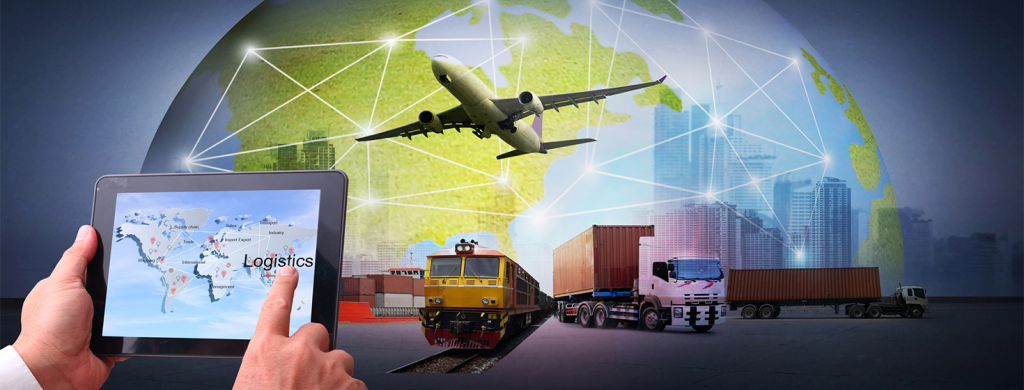Top Trends in Transportation Management Services for 2025
As we move toward 2025, the TOP Transportation Management Services industry is undergoing rapid transformations. With the rising demand for efficiency, transparency, and sustainability, logistics businesses are embracing new technologies and solutions that will reshape the industry in the coming years. This article will discuss the top trends in TMS for 2025 and how they will impact businesses and operations.

1. Integration of Artificial Intelligence (AI) and Machine Learning (ML)
One of the most significant trends in TMS for 2025 is the growing use of Artificial Intelligence (AI) and Machine Learning (ML). These technologies are already enhancing transportation operations by enabling real-time decision-making, predictive maintenance, and route optimization.
- AI-powered route optimization helps businesses find the most efficient delivery routes by considering traffic, weather, and road conditions, resulting in faster deliveries and reduced fuel costs.
- Predictive maintenance powered by AI ensures that fleet vehicles are kept in optimal condition, identifying potential issues before they become critical problems, reducing downtime and repair costs.
- ML algorithms also assist in demand forecasting, helping businesses plan and adjust their transportation schedules based on fluctuating consumer demand.
These advancements will help transportation companies optimize operations and become more agile in a fast-changing industry.

2. Real-Time Data and Visibility
Real-time data is crucial for modern logistics, and businesses are increasingly relying on real-time visibility to track shipments and monitor operations. With the help of IoT sensors and telematics systems, companies can track goods in transit, monitor conditions such as temperature or humidity, and make quick adjustments if necessary.
- End-to-end visibility means businesses and customers can track shipments at every step, enhancing transparency and reducing uncertainty in the supply chain.
- Real-time data enables better decision-making, helping managers address delays, reroute shipments, or adjust schedules to meet changing demands.
Accessing real-time data allows businesses to react quickly to disruptions, ensuring timely deliveries and reducing the risk of mistakes.

3. Cloud-Based TMS Solutions
Cloud-based TMS solutions are gaining traction due to their flexibility, scalability, and ease of access. With businesses increasingly moving toward digital transformation, cloud-based systems allow seamless integration with other business tools like Enterprise Resource Planning (ERP) and Warehouse Management Systems (WMS).
- Cloud platforms ensure that transportation data can be accessed from anywhere, anytime, enabling remote team collaboration.
- They also offer real-time updates, allowing businesses to monitor shipments and performance metrics efficiently and make quick decisions.
- These systems also reduce the need for on-premise infrastructure, cutting IT costs and improving system reliability.
Cloud-based TMS solutions are essential for businesses looking to streamline operations, improve efficiency, and reduce overhead costs.

4. Automation and Robotics in Warehousing
The integration of automation and robotics in warehouses is transforming how goods are sorted, packaged, and loaded onto trucks. This shift will only accelerate in 2025, as more companies implement automated systems to improve accuracy and speed.
- Automated Guided Vehicles (AGVs) and robotic arms in warehouses help speed up the sorting and packing of products, reducing the need for manual labor and minimizing human errors.
- Robotic Process Automation (RPA) can automate repetitive tasks such as invoicing, reporting, and data entry, freeing employees to focus on more critical tasks.
- Drones are also being explored for last-mile delivery, offering a faster and more cost-effective solution, especially for remote areas.
Automation will continue to drive productivity and efficiency in the transportation and logistics sectors.
5. Enhanced Customer Experience
Customer expectations are evolving, and today’s consumers demand more transparency and flexibility in their delivery experiences. As a result, transportation management systems increasingly focus on improving the customer experience by offering more control and visibility over the shipping process.
- Customer-facing portals allow customers to track their shipments in real-time, make delivery preferences, and communicate with companies for updates.
- Personalized services are enabled by data analytics, allowing customers to choose delivery windows, adjust routes, or even select their preferred delivery method.
- Chatbots and AI-driven customer support help businesses respond quickly to customer inquiries, improving customer satisfaction.

Conclusion
Technologies like AI, real-time data, cloud solutions, and automation will shape the Transportation Management Services (TMS) landscape in 2025. By embracing these trends, businesses can enhance operational efficiency, reduce costs, and meet the growing demands of customers for faster, greener, and more transparent services.
Industry Insights
news via inbox
Nulla turp dis cursus. Integer liberos euismod pretium faucibua








